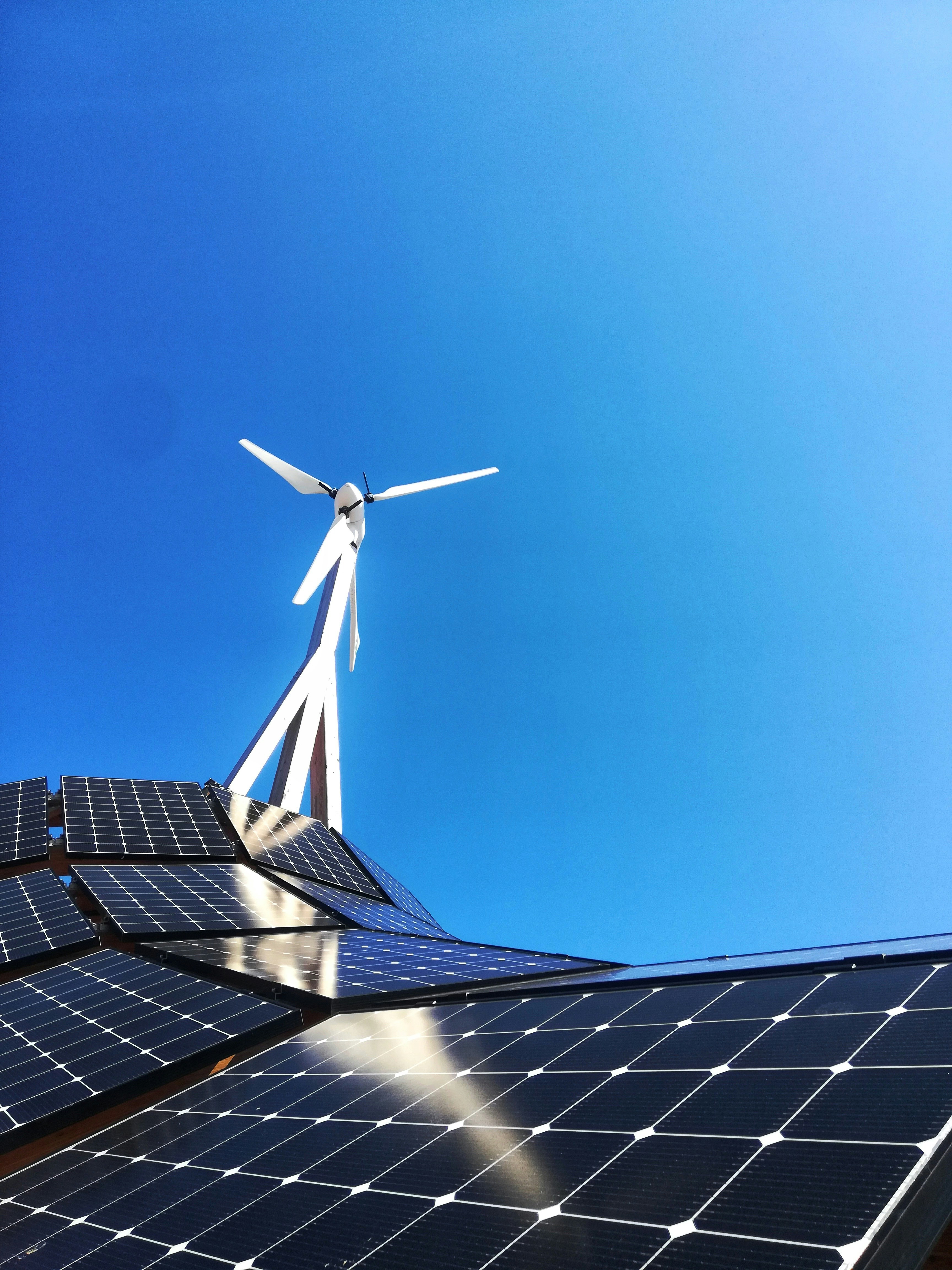
Understanding Solar Energy
Solar energy is a renewable energy source derived from the sun’s radiation. It is harnessed through advanced technologies, most commonly solar panels. These panels are primarily composed of photovoltaic (PV) cells, which are designed to convert sunlight directly into electricity. When sunlight strikes these cells, it excites electrons, generating direct current (DC) electricity. This DC electricity can then be converted to alternating current (AC) through an inverter, making it usable for domestic appliances and contributing to the electricity grid.
The efficiency of solar energy systems largely depends on several factors, including the type of PV cells used, the angle and orientation of the panels, and the amount of sunlight received at the installation site. Monocrystalline panels today represent some of the most efficient options, converting a significant portion of sunlight into usable energy. However, other factors, such as shading from trees, buildings, or other structures, can lead to a reduction in overall efficiency.
Climate also plays a vital role in the effectiveness of solar energy systems. Regions with higher solar insolation—units measuring the solar energy received—tend to benefit more from solar installations. For example, areas with abundant sunshine can maximize the generation of solar power, while regions with frequent cloud cover may see diminished returns. This geographical variability underscores the importance of evaluating local conditions when considering solar energy solutions.
As awareness of renewable energy sources grows, an increasing number of homeowners are adopting solar energy systems. This trend is fueled by the potential for reducing electricity bills and lowering carbon footprints. By leveraging solar power, households can harness a cleaner, sustainable form of energy that not only benefits their finances but also contributes to a reduction in greenhouse gas emissions. This shift towards solar energy signifies a broader commitment to sustainable living and environmental responsibility.
Exploring Wind Energy
Wind energy is a sustainable and renewable energy source that harnesses the power of wind to generate electricity. This process typically involves the use of wind turbines, which convert kinetic energy from the wind into mechanical energy, and subsequently into electrical energy. Wind turbines designed for home use can vary in size and type, but most commonly fall into small-scale systems, which are ideal for residential applications. These systems can be either vertical-axis or horizontal-axis turbines. Vertical-axis turbines, which have blades that are mounted vertically, are less impacted by wind direction and can operate in turbulent conditions, making them suitable for urban environments. On the other hand, horizontal-axis turbines tend to be more efficient, particularly in areas with consistent wind speeds.
The advantages of using wind energy at home are significant. Firstly, wind energy is a clean and renewable source that produces no greenhouse gas emissions during operation, making it an environmentally friendly alternative to fossil fuels. By investing in wind energy solutions, homeowners can reduce their carbon footprint and contribute positively to combatting climate change. Furthermore, the utilization of wind energy promotes energy independence, allowing households to generate their own electricity and reduce reliance on conventional power grids.
Numerous case studies illustrate the practical benefits of implementing wind energy solutions in residential settings. For instance, homeowners in rural areas with steady wind patterns have reported substantial reductions in their electricity bills after installing small wind turbines. Additionally, some have even achieved energy surplus, allowing them to sell excess power back to the grid. These success stories serve as compelling evidence of the viability of wind energy for residential use, highlighting how individuals can lead the way in embracing renewable energy solutions and promoting a sustainable future. The potential for wind energy at home is vast, making it a promising option for those looking to enhance their energy efficiency and environmental responsibility.
Economic and Environmental Benefits
The adoption of solar and wind energy at home offers significant economic advantages for homeowners while simultaneously addressing critical environmental concerns. One of the most immediate benefits is the substantial reduction in utility bills. By harnessing solar panels or wind turbines, households can generate their own electricity, which decreases dependence on traditional grid-supplied power, leading to lower monthly energy expenses. Over time, these reductions can accumulate into considerable savings, making renewable energy systems a wise investment.
Many homeowners may not be fully aware of the potential financial incentives available when investing in solar or wind energy. Various tax credits, rebates, and grants can significantly offset the initial installation costs of renewable energy systems. For instance, the federal solar tax credit allows homeowners to deduct a percentage of the installation costs from their federal taxes, making the switch to renewable energy even more appealing. Additionally, some states and local governments offer programs to encourage the adoption of green technologies, enhancing the financial viability of such investments.
From an environmental perspective, transitioning to renewable energy sources like solar and wind is crucial in reducing reliance on fossil fuels. This shift not only lowers greenhouse gas emissions but also contributes to cleaner air quality by minimizing pollutants associated with conventional energy sources. As communities harness solar and wind energy, they actively lead efforts in combating climate change and promoting sustainable practices. By choosing renewable options, homeowners are playing a pivotal role in leading their communities toward a more sustainable future.
In summary, the economic benefits of adopting solar and wind energy, alongside their positive environmental impact, present a compelling case for homeowners to embrace these renewable technologies. The long-term reductions in energy costs combined with the available financial incentives enhance the attractiveness of investing in wind and solar energy solutions for domestic use.
Practical Considerations for Homeowners
As homeowners contemplate the integration of solar and wind energy into their daily lives, several practical considerations must be addressed to ensure a smooth transition into renewable energy usage. The first step involves a thorough assessment of energy needs, which is pivotal in determining the appropriate system size and type. Homeowners should analyze their energy consumption patterns by reviewing past utility bills, enabling them to identify peak usage times and areas for potential savings.
Site evaluation plays a critical role in the deployment of solar panels and wind turbines. Solar energy systems require adequate sunlight exposure, thus selecting a location that maximizes sun exposure while minimizing shade from nearby trees or buildings is essential. Similarly, wind turbines necessitate an open space where wind flow is unhindered. Homeowners should also consider local climate conditions, as these can significantly affect energy output and overall efficiency.
Installation costs of solar and wind energy systems can vary widely, influenced by system capacity, the complexity of installation, and local labor rates. Homeowners should obtain multiple quotes from reputable contractors to compare prices and services. It is essential to evaluate the long-term return on investment (ROI) when considering these systems, as the initial costs can be offset by savings on utility bills over time.
Maintenance requirements should not be overlooked. Solar panels generally require minimal maintenance, while wind turbines may necessitate regular inspections and occasional repairs. Homeowners should familiarize themselves with maintenance schedules to ensure optimal system performance.
Equally important is understanding local regulations, permits, and utility requirements that govern the installation of renewable energy systems. Homeowners should research these guidelines to avoid potential legal issues and ensure compliance. Furthermore, seeking additional resources, such as community workshops and online forums, can provide valuable insights and connections with renewable energy professionals, aiding homeowners in making informed decisions.

It’s interesting how panel efficiency depends on factors like angle, shading, and local climate. I’d love to see more discussion about real solutions for improving performance in cloudier regions.
I wonder if hybrid systems combining solar and wind could balance out efficiency issues during less sunny seasons.
The connection between solar energy and long-term cost savings really stood out to me. Has anyone here taken advantage of local rebates or tax credits when installing panels?
Good read!